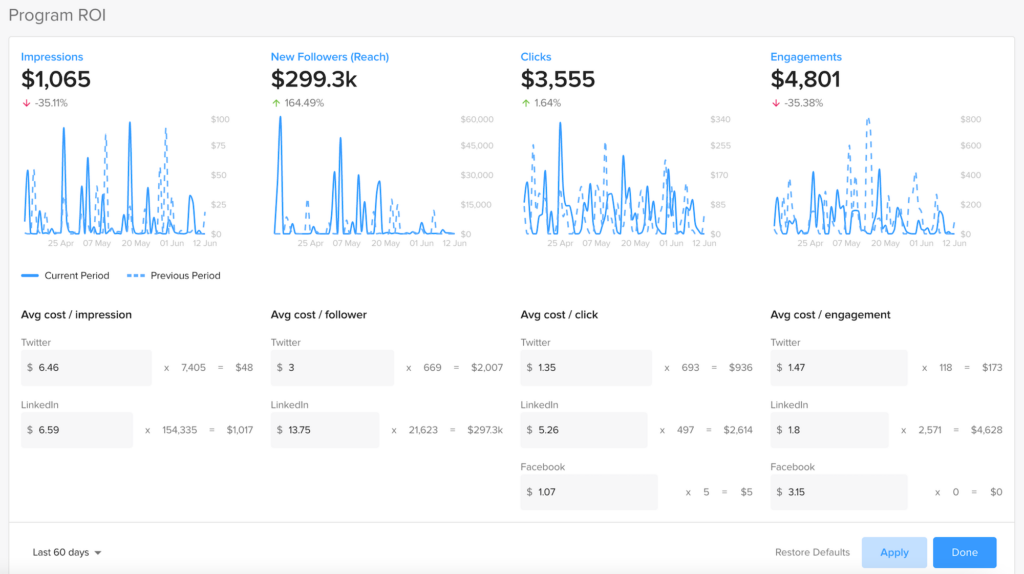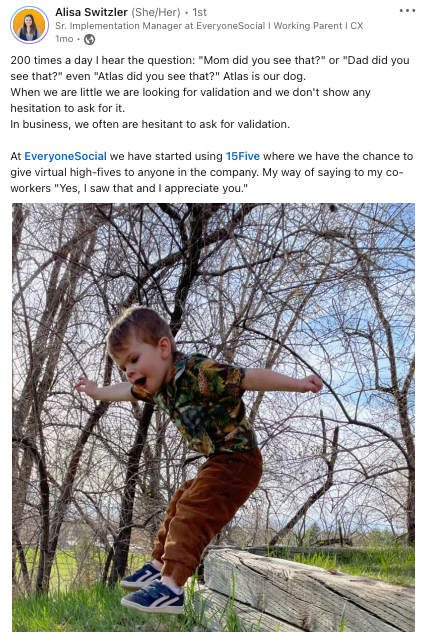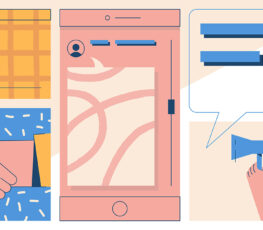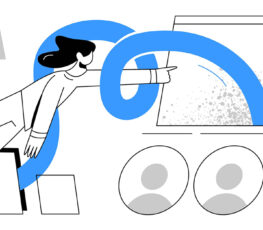Marketing is constantly evolving and the way buyers consume also changes. Mostly due to new channels and platforms for people to better research and connect with others.
But within marketing, there will always be channels that are part of the overall playbook. One of those being paid advertising, whether it’s paid social (LinkedIn, Facebook) or paid search (Google, Bing).
However, paid advertising can be challenging today for a few reasons:
- Paid channels are more competitive than ever.
- The costs continue to rise, increasing your spend for less results.
- People are more accustomed to ads, often ignoring or scrolling past them.
- Ad blocker use continues to rise.
Does that mean ads are completely ineffective? Not quite, as they still create brand awareness and drive revenue. However, we’ve found that scaling your advertising results improves by activating employer influencers.
Let’s explore!
The Employee Influencer Effect
I don’t want to spend a ton of time on the value of employee influencers, but let’s have a quick overview for context.
Today, social media is the place where people consume, connect, research, learn, and buy. Social channels are undoubtedly important for your company to be active on. And part of that now is enabling employees to be influencers.
Whether employees have 100 or 1 million connections, every member of your team is capable of driving growth by leveraging their social network. And here’s some data to back up the value:
- Content has 2x higher engagement when shared by employees. (LinkedIn)
- On average, your employees have a network reach that is 10x larger than your company’s follower base. (LinkedIn)
- Brand messages reach 561% further when shared by employees vs. the same messages shared via official brand social channels. (MSLGroup)
Additionally, when employees actively create, share, and engage on social media, it benefits their own personal brands as well. A win-win!
3 Ways Employee Influencers Improve Paid Ad Strategies
Promoting your content via ads is important, but it’s not the only thing you should rely on, especially given economic changes and varying marketing budgets.
While there are many benefits of employee influencers for marketing, activating your people as influencers who can share your content to their networks will improve the efficiency and overall results of your paid efforts.
Let’s explore how.
P.S. Make sure to share this content with your marketing team members and leadership. 😎
1. They optimize paid ad dollars.
Companies spend thousands or millions per year on paid ads. Here at EveryoneSocial, we’re in the six-figure range by the end of the year ourselves.
But think about what your company is spending on ads right now. Depending on its size and marketing budget, it can be quite a bit just for ads. Then add an extra expense if you have a marketing agency running these for you.
Yet even as ads become more expensive, many businesses rarely bat an eye about throwing more money into campaigns to “keep up.” It’s so ingrained in marketing strategies, that when results taper off, the solution is often to dump more money into ads to try to turn them around!
Instead, you can optimize your paid advertising dollars with employee influencers. Simply take a portion of that ad budget and put it toward an employee influencer program.
A program like EveryoneSocial costs a fraction of paid ads. For example, outcomes from employee influencers we found is about $0.05!

Think about the reach of employees, all who typically have an average of 1,000 social connections. Say you have 250 employees actively sharing and creating, that’s a reach of 250k people! And this doesn’t include employees’ secondary networks seeing that content or the growth of employee networks over time, which results in further influence of more people.
The impact:
- Save money from the increased costs of ads/targeting.
- Cost per click and cost per conversion on ads improves.
- Your dollars go farther with employee influencers.
In EveryoneSocial, you can see what the employee influencer impact would cost you in paid ads to understand the cost savings and ROI. Plus, you can also enter actual paid ad data points if you’d like to be even more accurate compared with default averages.

2. Improve Ad Consumption and Engagement
Think about the two stats below for a second:
- The average global social ad CTRs are down 30% year over year. (Statista)
- 42% of people say ads that showed up based on their online searches were annoying. And 36% said social ads targeted based on their interests and behavior were annoying. (eMarketer)
What you see from this data is that your paid ads may not be as effective as you think.
Ad consumption, reception, and engagement all improve when employee influencers are part of your marketing strategy. Why? Because they provide a humanized touchpoint.
The beauty here is employee social posts don’t need to be all about the company or its product. When your people share personal content, talk about their interests, or post about their expertise or even tools they love, such as in the example below, this content still triggers trust and brand awareness.

Social users can easily see where employees work, based on their headlines or bios, and they can simply click to learn more about the company. In other words, employees sharing even personal content kickstarts the brand-awareness cycle!
As someone in marketing, who’s inundated with technologies, I tend to overlook most ads targeted toward me. Being in the industry has made me ignore most of them, unless something catches my eye as a good ad.
However, I still engage and consume some ads. You know which ones those tend to be? Those where I’m familiar with the brand name because I’ve seen employee content first.
This is exactly how I heard about a few companies and their products. Then, when I start seeing ads, I’m more interested in the content and brand because I already have some awareness and trust toward them.
Sometimes, there might be superior competitors’ products out there. But when I need a product to solve a particular problem, the one I’m going to think of immediately is the one that I’ve seen employee content and ads from.
The winning combo is employee social content + ads. These touchpoints continue to influence others and create demand for your business.
The impact:
- More people stop and consume the ad content.
- There’s an increase in potential engagements and clicks.
- There’s additional influence in creating demand and pipeline.
Activate Your Team to Share and Create Content on Social Media 🚀
Give your company a competitive edge and your team a professional boost. Try EveryoneSocial's employee advocacy platform for FREE.
3. Strengthens Retargeting Lists
If you have a paid advertising strategy, then you probably have retargeting campaigns running. Here’s why they’re effective:
- Website visitors who are retargeted are more likely to convert by 43%. (Criteo)
- 25% of online viewers enjoy seeing retargeted ads. (CMO)
Retargeting already has some good ROI. Now imagine those statistics amplified by employee influencers and social content because there’s a much better connection to the ad content and the brand itself.
Here’s the scenario.
People who discover your company and its content from employees may end up on specific retargeting lists by clicking links or independently exploring your website.
These retargeting lists are triggered by actions people take on the site and, from there, they see more tailored ads that your company has set up. And because people already trust your employees and their content, retargeting keeps the brand top of mind for when users are ready to buy.
And your strengthened retargeting now improves ad relevance, which can be another problem with paid ads.
According to Adobe findings, 70%+ of advertisers believe their ads are relevant to the audience they target. Yet only 8% of people think ads they see online are always relevant.
That’s a huge gap!
But with increased retargeting lists influenced by employee networks, your targeting strengthens based on how they’ve interacted with your brand website.
The impact:
- It increases your retargeting lists that are influenced by employee networks.
- It strengthens retargeting ads when users see employees’ content in their social feeds.
- It improves ads’ overall effectiveness and relevance, as well as lowers ad costs.
Final Thoughts
As you think about your paid advertising strategy, it’s good to understand the impact employee influencers can have on the effectiveness of those campaigns.
You won’t catch us saying paid advertising is dead, because it’s not true and we aren’t here for clickbait. But paid advertising does have its growing faults, which is why an employee influencer program is a strong complement.
Instead of spending $100k on an ad campaign, you can spend a fraction on an employee influencer program that greatly improves your ad campaigns and yields results in multiple areas of your business.
Often. if a $100k ad campaign doesn’t work as it used to, the first thought tends to be to throw more money at it! But today, you have other options to optimize your money, drive ROI, and strengthen the results of your marketing strategy.
















